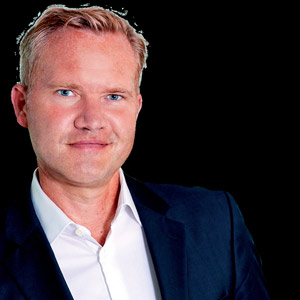THANK YOU FOR SUBSCRIBING

Why ERGO Shifted to an end-to-end AI Approach
Mark Klein, Chief Digital Officer (Cdo), Ergo Group (Otcmkts: Murgy)


Mark Klein, Chief Digital Officer (Cdo), Ergo Group (Otcmkts: Murgy)
Why are data scientists leaving their jobs? A colleague of mine sent me a blog post written by a data scientist oddly with this same title. His statement suggests some disappointment within the scientist community. One of his arguments that struck me is the idea that some data scientists are obviously confronted with a differing reality when it comes to their everyday work. While initially meant to develop cutting-edge algorithms, the reality of collecting, structuring, and sorting internal data for the foundation to develop algorithms has become a shift in job scope.
To be perfectly honest, the insurance industry requires us to handle varying amounts of imperfect data. Data ingestion and data preparation are important parts of our work. However, only focussing on model development is not the sole remit, it is just one part of a supply chain - that ends with the implementation of the algorithm into the business lines. To manage this in an end-to-end approach is, in my opinion, the key to being successful with your AI strategy (and of course being happy in your job).
A standardised setting for changing requirementsThis was the reason behind us bringing our brand new AI Factory to life as a standardised process chain. We combine the model development environment with existing applications and data sources - it´s like a car factory assembly line. In the beginning, you add all the components, all the ‘stuff’ needed, then at the other end the cars roll out ready to go.
Our AI factory has three main areas. One is data ingestion, which collects and structures internal data from all customer related ERGO insurance companies. The second is the data lab where preparation, development, and shadow modelling take place. From here, our car moves to the third area, the production centre, where integration of business processes takes place.
This brings a lot of advantages for us. We are flexible in combining core IT capabilities with the latest data science technology.
This degree of standardisation the AI Factory has results in a perfectly efficient engine within which imperfect data can be moulded into working model algorithms. How to deal with imperfect data in a highly regulated environment
Given the highly regulated environment and complex nature of the primary insurance business model compared to other industries, I am sure we are facing extra challenges. This is certainly true when it comes to the secure and compliant handling of personal data.
Very often when we are in initial AI model training, we have to recognize that our results do not meet our expectations. This is quite simply because we are working with imperfect data. The data sets provided might well be filled with all the data the business lines have collected, but there are still variables missing. The difficulty with these hidden objects is that we do not know what to look for and what patterns are included. This process is analogous to finding a needle in a haystack.
We Know Our Ai Factory Is Just At Its Beginning. However, With Every Algorithm We Deploy, With Every Task We Create, A More Mature Environment System Evolves
So, we have to stick our heads deeper into the millions of data rows, clean up data and find out how to adequately make the corrections available to our algorithms. We ultimately scale down the haystack until we find the needle. Since we started the AI competence centre, we have implemented nine AI algorithms into our ERGO Germany business lines. Over the nine development processes, the path taken was virtually identical as we constantly had to take turns, change direction and adapt to find suitable setups.
Here, a standardised process like the AI Factory helps to keep focus on such challenging tasks.
ERGO’s AI factory to become a fundamental building block of digital transformationWe know our AI Factory is just at its beginning. However, with every algorithm we deploy, with every task we create, a more mature environment system evolves. This initial foundation is then able to develop into a complex ecosystem – for sharing, processing, and leveraging our data assets. Starting the move from our on-premise analytics environment to our current cloud-based infrastructure only three months ago, we have already been able to push several use cases through the AI Factory – with increased efficiency. From this development, the AI Factory is a fundamental building block that is helping to achieve our strategy goals at ERGO.
This innovation will allow us to provide the company with new technological capabilities for achieving profitable growth and to become a digital leader in insurance - not just in Germany but also in our core markets worldwide.
Weekly Brief
I agree We use cookies on this website to enhance your user experience. By clicking any link on this page you are giving your consent for us to set cookies. More info
Read Also












